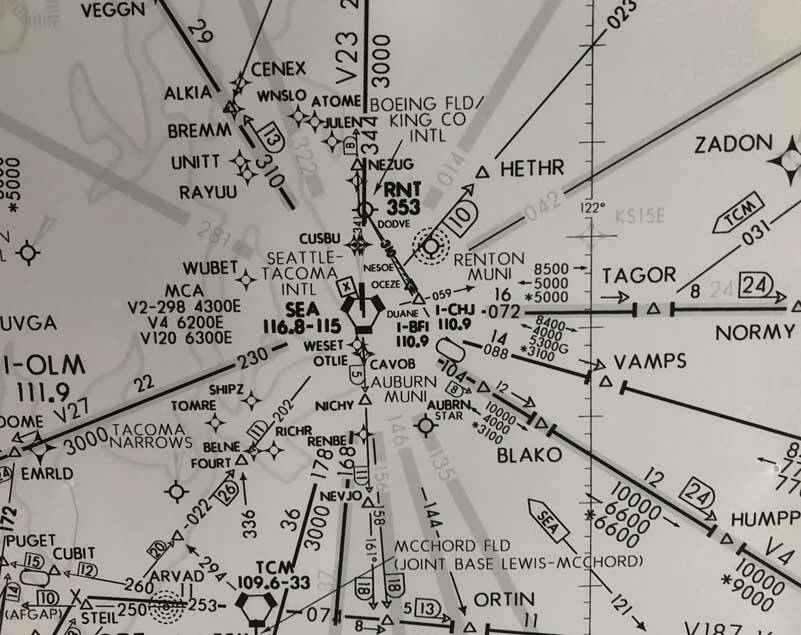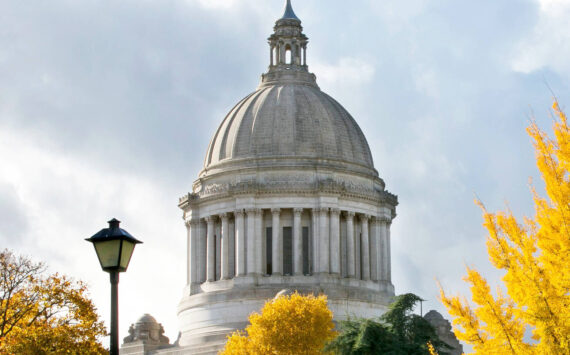By Morf Morford, Tacoma Daily Index
State and industry officials are reviewing two rural sites south of Tacoma as a possible location for new flight operations to accommodate significantly growing traffic at Seattle-Tacoma International Airport.
There are multiple assumptions at work in that sentence. Airports are expensive, take many years to plan and develop, and require hundreds, if not thousands of acres of level, usable land. And immensely expensive infrastructure.
And community support.
Maybe.
The central assumption, and guiding principle of this proposal, is that we “need” at least one new airport to take pressure off the increasingly busy Sea-Tac Airport.
And the presumption is that the demand for air traffic will continue – if not increase – in the future.
In other words, this is a major economic commitment based on a lot of assumptions.
Consider what you know and (presumably) love about rural Pierce County.
I love the vast open spaces south of the Roy “Y”. You can see small farms, open fields and vast forests for more miles than most in the city could even begin to imagine. And yes, there is the over-riding sense that the land could be “used” in other ways.
As mentioned above, two vacant expanses of land in the unincorporated county — one south of South Creek, the other south of Graham — are among more than a dozen areas throughout the larger region (including rural parts of King County) being explored for the potential home of a new one-, two- or three-runway airport that would be constructed by 2040 and could eventually see about 20 million annual passengers.
Yes, 20 million people passing through rural Pierce County. Every year. Sea-Tac International Airport serves approximately 50 million passengers a year.
Want to be a hub?
A state Legislature-created group, the Commercial Aviation Coordinating Commission, is considering the possibility of Pierce County becoming a hub for air travelers and shipments.
A May 2021 study by the Puget Sound Regional Council shows that, given current trends and projections, the region is projected by 2050 to see 27 million more annual passenger boardings than it can handle and 1.3 million metric tons of air cargo – about double the current demand.
The preference is for what are called “greenfield” sites, which is the term for undeveloped plots of land available for new construction.
Several sites have been considered. The first criteria is to be within 100 miles of downtown Seattle and west of the Cascade Mountains.
Among the greenfield sites being reviewed were two in Pierce County and several others in Skagit, Snohomish, Thurston, Lewis and King counties.
They started with ten and are hoping to have at least one suitable site.
All greenfields and currently active airports being considered were scored green, yellow or red by the state’s consultant on more than two dozen criteria that analyzed and evaluated land availability, proximity to transportation, environmental impacts and other factors relevant to determining whether an airport was feasible.
Each site was measured on three options: whether the airport would have one, two or three runways (which would dramatically affect how much space would be required).
A three-runway airport, for example, would take up 4,600 acres. Its primary 11,000-foot-long runway would be able to serve domestic commercial passengers and international cargo planes.
To put it mildly, a project on this scale brings with it a multitude of complications. Primary among these are the proximity to Joint Base Lewis-McChord and existing wetlands.
The “Pierce County Central,” site, a six-mile radius of land located south of South Creek (where state Routes 702 and 7 converge) has the fewest obstacles.
But here are some of them;
The site is less than five miles from essential and secure military training facilities.
This site would need more than 11 miles of new roadway constructed to connect to Interstate 5.
Much of the area is owned, occupied and used by residents, businesses, schools or religious institutions.
It is more than a 60-minute drive to or from downtown Seattle for cargo carriers.
And yes, there are even more complications
A three-runway airport, for instance, would require the acquisition of 500 to 1,000 currently owned or occupied parcels.
If you’ve been out there, you know that there are streams and low-lying areas all over. 150 to 400 acres of wetlands and floodplains fill and intersect the site.
And that area is called the Central Pierce County Aquifer – a major source of drinking water for most of us that live in the community.
Cost?
Projects like this are notorious for complications and unexpected cost-overruns, but a new airport in Pierce County is expected to cost between $200 million and $400 million.
The Commercial Aviation Coordinating Commission is expected to pick a location for a new airport by spring 2023.
Air Traffic
The article and news releases I have seen on this possibility have all neglected what I consider to be an obvious factor for those of us who would live around (or under) any new airport; air traffic.
I grew up a mile or so from the airfield at JBLM. Aircraft of all kinds (and at all times) would come in for a landing right over my house with a terrifying roar and vibration that would threaten to tear the house apart.
I have since moved to Tacoma’s North End where the aircraft are higher – but far more numerous.
Directly overhead we get aircraft coming in or taking of from Sea-Tac, jets coming in for a landing at JBLM and, at a far lower altitude, smaller aircraft from Tacoma Narrows Airport (TIW) .
We also get the occasional emergency helicopter on its way to a local hospital.
My point is that air traffic is constant.
And in transit to and from all directions.
If you want to track the air traffic overhead – or anywhere in the world, I suggest Flight Aware.
It just might guide any decisions regarding where we need – or don’t need – new airports.






